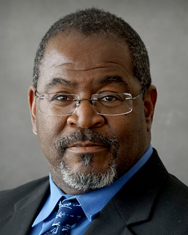Faced with a worldwide pandemic, Cooper leadership, physicians, and staff joined forces to provide bold, innovative care to some of the region’s sickest COVID-19 patients.

Joseph M. Montella, MD
Chief Medical Officer, Cooper University Health Care
“New Jersey realized early on that they needed a regional strategy to respond to the massive influx of patients in our hospitals,” says Joseph M. Montella, MD, MS, CPE, Chief Medical Officer for Cooper. “They divided the state into three regions and designated three academic medical centers as regional hubs—University Hospital in Newark, Robert Wood Johnson University Hospital in New Brunswick, and Cooper in Camden.”
Internally, Cooper initiated its incident management structure, which organizes decision making, staff, and resources to respond to disasters. The Incident Management Team addressed critical issues, including communications, patient surge, and procurement of sufficient personal protective equipment (PPE) to keep staff and patients from contracting the COVID-19 virus.
“We were especially conscientious about using PPE appropriately and not wasting it,” Dr. Montella says.
Cooper was fortunate to have a newly constructed ICU, which served as a second critical care unit. The post-anesthesia care unit (PACU) was repurposed as an ICU for non-COVID-19 patients. However, an ICU cannot operate without trained practitioners, and Cooper solved this problem with a creative approach to staffing.

Nitin K. Puri, MD
Division Head, Critical Care Medicine
“The trauma intensivists joined forces with us and took care of the non-COVID-19 critical care patients so we could focus on those with COVID-19,” says Nitin K. Puri, MD, Division Head of Critical Care Medicine. “We partnered med/surg nurses with critical care nurses in the ICU. The critical care nurses delivered the critical level of care, and the med/surg nurses provided less intensive care.”
Innovation didn’t stop with staffing models. Cooper also pushed the envelope in the treatment of the sickest COVID-19 patients. Proning, or the act of turning intubated patients to lie on their stomach, became a popular approach to treating very sick patients throughout the country.
“At Cooper, we made the decision to prone every patient as soon as they were intubated to improve their oxygen intake,” says Dr. Puri. “But proning is labor intensive, and when you are turning 20 or 30 people a day, it can quickly become overwhelming.”
To handle the volume of patients and ensure the expertise of the staff responsible for this task, Cooper created multidisciplinary proning teams.
“We were also very aggressive about the use of ECMO [extracorporeal membrane oxygenation] because we felt it would help,” says Dr. Puri. “And for many patients, it did.”
ECMO is used to support the heart or lungs when a ventilator cannot provide adequate assistance.
During the pandemic, elective surgeries were put on hold, but emergency and trauma procedures continued.

John M. Porter, MD
Division Head, Trauma Surgery
“Cooper is South Jersey’s only Level I Trauma Center for adults and Level II Trauma Center for pediatrics,” says John M. Porter, MD, Division Head of Trauma Surgery. “So it was vital that we kept those services active.”
Dr. Porter is also Medical Director of Supply Chain, and he played an integral role in ensuring that Cooper had an adequate supply of PPE to keep staff and patients safe, although he gives credit to Thomas Runkle, Vice President of Supply Chain.
“Tom spent a lot of time on the phone securing supplies— calling manufacturers as far away as China and Malaysia—and capitalizing on Cooper’s relationship with the State Department to arrange air transportation,” says Dr. Porter.
Cooper also took steps to alleviate stress and provide support for staff who faced an increased volume of patients and the emotional effects of being exposed to a virus about which little was known. “We established a Resiliency Team early on, made up of clinical psychologists from our Psychiatry Department,” says Dr. Montella. “They would visit the floors and talk to staff, giving staff someone to share their fears with.”
Primary care physicians also played a key role in the COVID-19 response. A telehealth system was set up in less than a week to support remote visits and reduce traffic in physician offices.
“We really counted on our primary care providers to take care of patients in the community, if possible, and direct patients to the correct level of care, which eased pressure on the ED,” says Dr. Montella. “And they did an amazing job.”
“I think the reason we were so successful is that we have a great group of people who share their ideas, and those views are welcomed by leadership,” says Dr. Montella. “Sometimes in a crisis there’s an impulse to respond very quickly, but we went through multiple layers of vetting to try to get everything right… our end point was taking great care of patients and making sure our staff was engaged and safe. And I think we accomplished that.”
